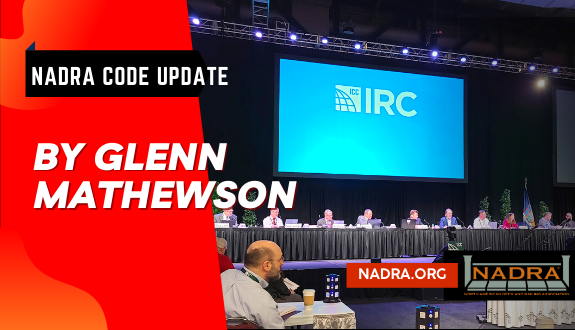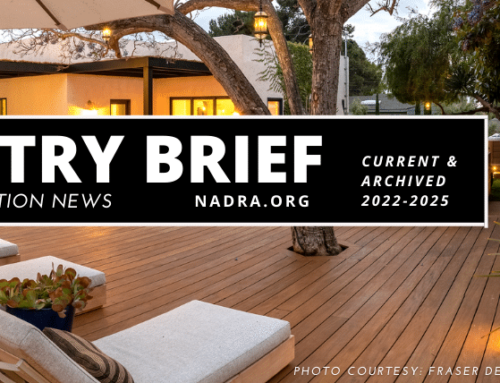Published April 5th, 2022
By Glenn Mathewson
This month was spent preparing for the Committee Action Hearings and attending them at the end of the month. I had various meetings and communications with other industry professionals to discuss concerns found in each other proposals and to address disagreements. I arrived at the hearings the evening of March 28th and remained in attendance through Saturday afternoon, April 2nd. Most deck related proposals were heard on Wednesday and Thursday, with the proposals in chapter 507 finishing up just before the conclusion for the night.
Of the 17 proposals submitted by NADRA, all but two were approved by the committee. Some were approved as submitted and some were modified during the proceedings before approval. Many of the proposals were simply clerical in nature, either correcting misused terms or restructuring sentences simply to make the code more consistently and correctly interpreted. Though not glamorous or necessarily exciting, NADRA has positioned itself as the industry leader for deck code representation, and that comes with an obligation to not just address new subjects, but to refine existing ones, both simply and significantly.
One such significant refining is something exciting to share. RB184 expanded the heading of the beam span tables to reveal the various combinations of joist span and cantilever length. In the current version, when you look at the table heading for a 10-foot joist span, for example, the beam is being sized to support that span and a 2.5-foot joist cantilever. A footnote in the table explains this and provides a method for correcting the inaccuracy of the span, but it is not user-friendly. With the modifications we proposed, the heading expands to reveal various combinations that work under the same table column. A 10-foot span with 2.5-foot cantilever loads the beam nearly the same as a 12-foot span with 1-foot cantilever and 14-foot span with no cantilever, and now both are shown. This proposal was approved.
A new subject we addressed in the IRC was a proposal for ledger flashing. Preparations for this proposal were carefully completed so that a variety of methods and conditions across the country in deck ledger connections could be addressed. The new provisions proposed in RB189 address flashing, the water-resistive barrier, and the cladding. Methods for new construction including lacing flashing into the barrier and sealing it over top were included, along with an allowance for rain screen cladding and ledgers spaced off the wall to allow back drainage and ventilation. For existing conditions, methods were included that keep the existing barrier intact and for when there is no existing barrier. As with any new provisions in the code, we expect these to be refined in public comment and over the years with new IRC editions.
There were several proposals from others that we watched, supported, opposed, or proposed modifications to such as stairs at ground level decks, lateral bracing, deck waterproofing, wind resistance of soffits below decks, and required handrails on ramps to name a few. I’ll be updating you throughout the coming months about these proposals as we prepare public comments for the public comment hearings this Fall.
Learn more about important dates you should be aware of right HERE.
Please feel free to contribute your thoughts, your time, and your resources as you see fit. You may contact NADRA’s code committee by sending an email to Info@NADRA.org. Please put “Attention Code Committee” in the subject line.
We appreciate your support.


